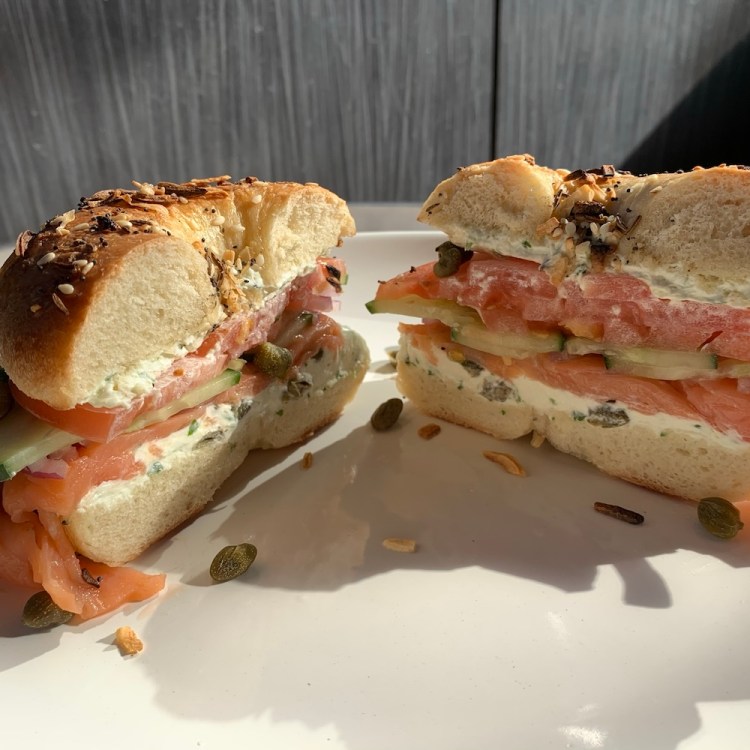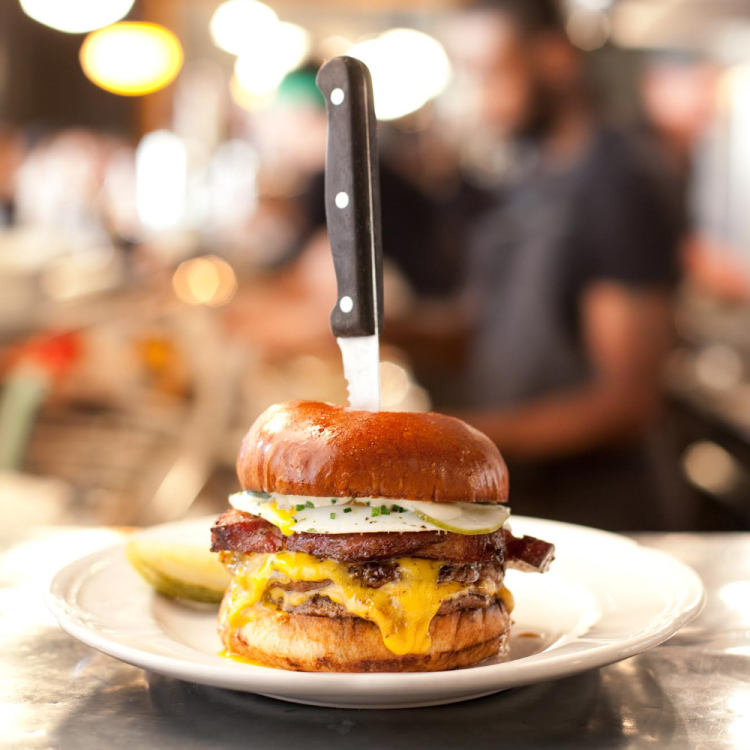Because every man wants to expand his palate, and every man doesn’t have the time to travel to far-flung places, we present Gateway Grub, a look at one cultural cuisine through quintessential dishes.
Today, we’re celebrating Cinco de Mayo by taking a dive into the soulful, richly diverse cuisine of Mexico — by introducing you to five lesser-known dishes that combine regional home cooking with cheffy finesse.
Because if there’s anything we need with Mexico right now, it’s understanding.
Our guide: Diana Dávila, chef/owner of Mi Tocaya Antojeria, a bustling, utterly delicious, very-hot-right-now shared-plates joint in Logan Square.
You may remember Dávila from the short-lived Cantina 1910 in Andersonville. Mi Tocaya, meaning “my namesake,” reflects the deeply personal nature of Dávila’s first solo venture, where she plans to share the flavors of her childhood and travels in Mexico.
“At Mi Tocaya, I came full circle in combining the professional cook, the mother and the home cook in me,” Dávila says. “The basis and foundation for Mexican food, like any culture, is the food of the home — that your mothers, aunts and uncles make. That’s what I want to share.”
Per Dávila, the majority of Chicago’s Mexican restaurants fall into two camps: the ubiquitous mom-and-pop taquerias that cater to American palates while “trickling in a few family recipes,” and the exploding “fine-dining Mexican” category that often incorporates fusion elements.
The antojeria — which translates loosely to Mexican tapas joint — sits somewhere in between. Regionally inspired shareable bites, tacos and large plates are flanked by a focused list of bright draft cocktails and sessionable Mexican brews. “The antojeria is lively and super casual, but the food still punches you in the face,” she says. “It’s food you’ll crave.”
And crave it you certainly will. We know because Davila was kind enough to fire up the grill and school us on her elevated takes on her family’s most beloved recipes. ¡A comer!
Peanut Butter y Lengua
Growing up in a family of talented cooks, as Dávila did, “everyone has a go-to dish they’re really proud of,” she says. Lengua con salsa cacahuate, or beef tongue with peanut-chile salsa, is her Uncle Hector’s specialty. Dávila’s cheekily named version stars tender chunks of braised beef tongue topped with charred radish halves and sharp pickled onions. Streaks of peanut and arbol chile sauce lend creaminess and spice. “We knew people would order it just because it sounds dope as f*ck,” she says. “The nice thing is, they actually like it.”
Fideos Secos
Affectionately described by Dávila and her cooks as the dish with the “juicy, round booty,” this comforting flavor bomb is inspired by the childhood favorite sopa seca, a dry noodle soup flavored with pasilla chiles and burnt tortillas. “Sopa seca was my muse, but we took it a step further,” she says. Actually a lot of steps, starting with a smoked chicken broth that’s flavored with a mess of onions, chicken livers, black peppercorns and cumin in addition to the aforementioned chiles and charred tortillas. The resulting roasted liquid infuses and cooks toasted cut pasta, or fideos. It’s then finished with raw onion and a healthy dollop of chintextle, an indigenous smoked chili and seed paste from Oaxaca.
Sweetbread Milanesa with Salsa Veracruzana
As a child, Dávila spent most summers in Mexico traveling around the country with her aunt. She recalls chilling on the beach in Veracruz: “It was the first place I really saw the stars.” This Gulf-side port city was also where she first tasted salsa veracruzana, a stewed tomato sauce with orange, olives and parsley that’s traditionally served with fried fish. Instead of stewing the tomatoes, Dávila makes them into a gremolata, punctuated with bright orange zest, briny olives and caperberries. It’s the perfect foil to mild, creamy sweetbreads, which are brined in sour cream, dredged in cornstarch and fried till crisp.
Milpa Taco
This taco is the antidote to every cheese- and crema-laden veggie taco you’ve ever had. Oh, and it’s a mini agricultural lesson. “Milpa is the Mexican crop-rotation system of corn, squash, beans and chiles, which is what’s kept the soil so fertile here,” Dávila says. A corn tortilla is slathered with huitlacoche (corn fungus) and black bean paste then topped with butternut squash and fennel, corn crema, queso fresco and a single morita pepper that’s house-pickled in adobo and fried. “It’s not only the cornerstone of Mexican cooking, but a cornerstone of Mexico itself,” she says. “Plus, it’s fun to say.” Say it with us: meel-puh.
Mussels Pozoleros
Dávila’s favorite dish of her mom’s is pozole, which is exactly why she hesitated to learn how to make the traditional hominy stew. “I was scared once I learned how to make it, it would lose some of its mysticism,” she says. She got over that fear, and has since done twists on her mom’s pozole on every menu she’s written. Mussels — often paired with a vinegary or fatty broth — were a natural fit, she says. The pozole base (pork shoulder cooked in water with onion, guajillo, pasilla and lots of oregano) is the same, save for a little seaweed. “It gives the mussels a little more ocean, since it’s where they’ll be laid to rest,” she says. Toothsome hominy rounds out this comforting, oceanic hug of a dish.
Photos: Tom Gallagher
Join America's Fastest Growing Spirits Newsletter THE SPILL. Unlock all the reviews, recipes and revelry — and get 15% off award-winning La Tierra de Acre Mezcal.






















